One of our goals here at LAMP is to involve the community with our research, as directly as possible. This will not only expand our public archaeology program, but also help us accomplish more fieldwork and research than we have been able to in the past. We have had eight local divers from the St. Augustine and Jacksonville area who have expressed interest in working side by side with underwater archaeologists. In order to build a skilled research team, it takes a lot of training and experience–after all, scientific diving is not the same a recreational diving, and it involves a lot of work beyond an open water certification.
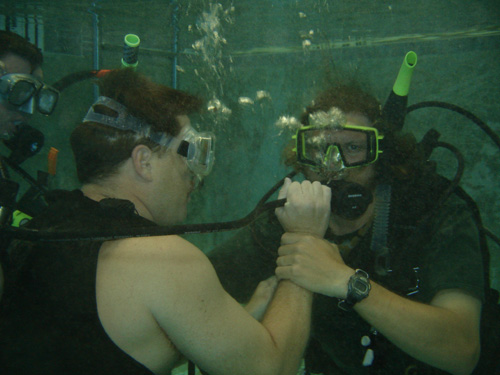
Here LAMP Director and Diving Safety Officer Chuck Meide practices buddy breathing with a LAMP volunteer diver.
LAMP has a strict diving safety protocol based on the national standards developed by the American Academy of Underwater Scientists (AAUS). These are in place to maximize safety while scientific diving, which by definition is task-oriented and involves more rigorous diving and planning than recreational diving.
Last week we conducted pool checkout dives for four LAMP volunteer divers. Evelyn Jaynes, Brian Giannoni, Jim Wright, and Dave Huber are all gung-ho about diving on LAMP projects, and have proven it by undergoing the required medical exams, paperwork, and these checkout dives. The swim test and pool checkouts are not easy, and we spent around 5 hours in the pool to finish them!
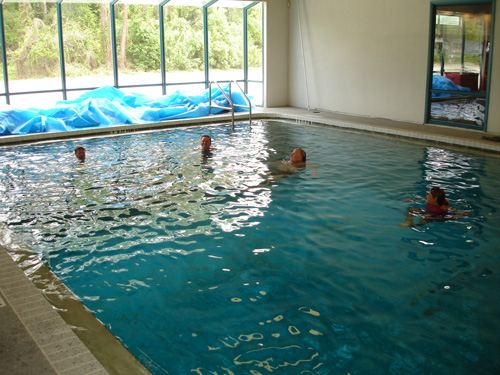
The swim test involves a 400 yard swim, a 25 yard underwater swim, towing another person 25 yards, and ten minutes of treading water (and the last two minutes have to be without using hands!) We are lucky to have the local dive shop, Sea Hunt Scuba, as our partner. Sea Hunt Scuba, a long-time supporter of LAMP and underwater archaeology, lets us use their pool at no charge.
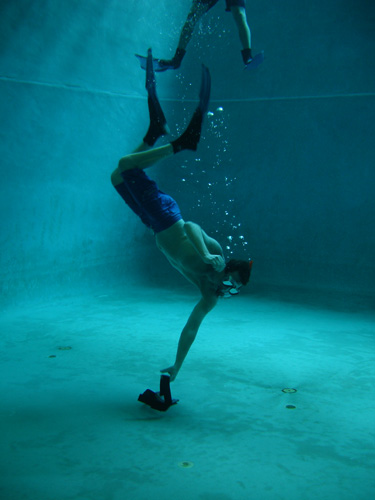
After the swim test are some required snorkelling skills. Here volunteer Brian Giannoni performs a surface dive and retrieves a ten pound weight from a depth of 12 feet.
After completing the swim skills, we review and practice a number of scuba skills. Chuck is an experienced NAUI instructor who taught scuba at FSU for eight years. Here he reviews the various skills expected of the LAMP divers.
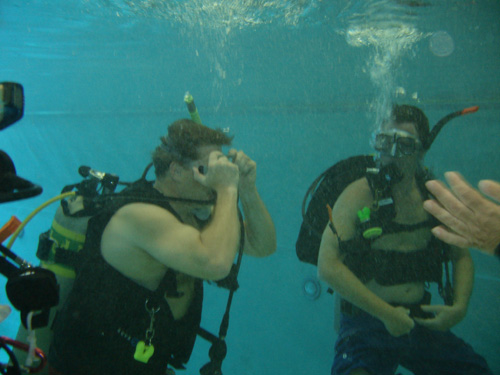
The required scuba skills include mask removal and clearing, regulator removal, retrieval, and clearing, buddy breathing, removal and replacement of all scuba gear on the bottom, and other skills neccessary for safe diving. Only a well-trained diver who is comfortable in the water can
safely and efficiently collect data from an underwater site.
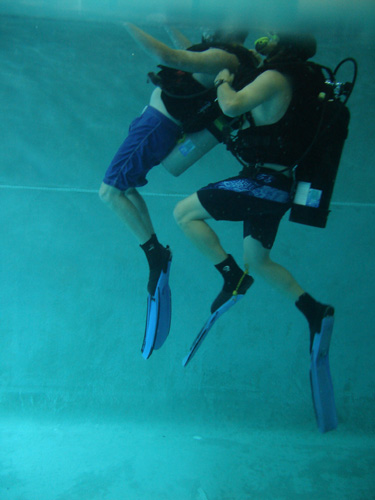
Another important skill is the ability to perform a rescue on an unconscious diver in an emergency situation. Here a LAMP diver demonstrates this skill, bringing an unresponsive diver to the surface. Once on the surface, the rescuer will establish positive buoyancy for himself and the diver, and tow the diver a full length of the pool while performing rescue breaths. Not every certified diver has been trained in this skill, as important as it is.
These kinds of drills are part of the overall safety standards that keep LAMP divers as safe as possible while conducting work that has an inherit increased risk. The next step is for the divers to complete an open water exam to refresh their diving academic knowledge. After that, they will participate in a series of training workshops ranging from diving topics such as rescue diving and nitrox diving, to advanced training in underwater archaeological methodology. Our volunteers will be diving with us by this summer as “science divers in training”. All divers-in-training must dive under the supervision of an active science diver. After an additional 100 hours of training, they will recognized as “active science divers” and qualified to do most of the diving that LAMP archaeologists do.
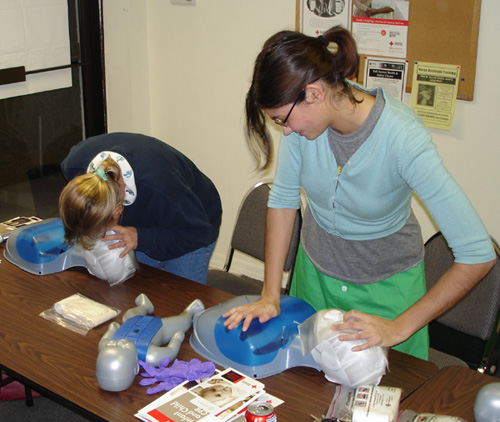
Volunteers Evelyn Jaynes and Marissa Kings in thier LAMP CPR/First Aid class, held in last February.

